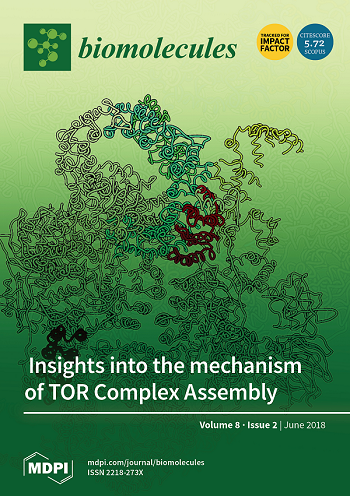犬尿酸对斑马鱼胚胎和成年虹鳟鱼的影响
IF 4.8
2区 生物学
Q1 BIOCHEMISTRY & MOLECULAR BIOLOGY
引用次数: 0
摘要
犬尿氨酸(KYNA)是色氨酸在犬尿氨酸途径上形成的代谢产物。它在哺乳动物体内的药理作用比较明确,而在鱼类体内的作用却鲜为人知。因此,本研究的目的是进一步了解 KYNA 在鱼类体内的存在及其对鱼类发育和功能的影响。研究对象是斑马鱼幼体和成年虹鳟鱼。我们提供的证据表明,KYNA 存在于胚胎、幼鱼和成熟鱼体内,而且其在器官中的分布差异很大。对 KYNA 对早期幼体发育影响的研究表明,它可以加速幼体成熟,尤其是在鱼类生长不理想的条件下。此外,浓度超过 1 mM 的 KYNA 会导致幼体形态受损和死亡。然而,将幼体长期暴露于亚毒性浓度的 KYNA 不会影响在标准最佳条件下饲养的 5 天大幼体的行为。我们还发现,摄入添加了 KYNA 的饲料会导致 KYNA 的积累,尤其是在成熟鳟鱼的幽门盲肠中。这些结果使我们对 KYNA 的相关性有了新的认识,并为进一步研究犬尿氨酸途径在鱼类中的重要性提供了新的动力。本文章由计算机程序翻译,如有差异,请以英文原文为准。
The Effects of Kynurenic Acid in Zebrafish Embryos and Adult Rainbow Trout
Kynurenic acid (KYNA) is a metabolite of tryptophan formed on the kynurenine pathway. Its pharmacological effects are relatively well characterized in mammals, whereas its role in fish is poorly understood. Therefore, the aim of the study was to expand the knowledge of KYNA’s presence inside a fish’s body and its impact on fish development and function. The study was performed on zebrafish larvae and adult rainbow trout. We provide evidence that KYNA is present in the embryo, larva and mature fish and that its distribution in organs varies considerably. A study of KYNA’s effect on early larval development suggests that it can accelerate larval maturation, especially under conditions that are suboptimal for fish growth. Moreover, KYNA in concentrations over 1 mM caused morphological impairment and death of larvae. However, long-lasting exposure of larvae to subtoxic concentrations of KYNA does not affect the behavior of 5-day-old larvae kept under standard optimal conditions. We also show that ingestion of KYNA-supplemented feed can lead to KYNA accumulation, particularly in the pyloric caeca of mature trout. These results shed new light on the relevance of KYNA and provide new impulse for further research on the importance of the kynurenine pathway in fish.
求助全文
通过发布文献求助,成功后即可免费获取论文全文。
去求助
来源期刊

Biomolecules
Biochemistry, Genetics and Molecular Biology-Molecular Biology
CiteScore
9.40
自引率
3.60%
发文量
1640
审稿时长
18.28 days
期刊介绍:
Biomolecules (ISSN 2218-273X) is an international, peer-reviewed open access journal focusing on biogenic substances and their biological functions, structures, interactions with other molecules, and their microenvironment as well as biological systems. Biomolecules publishes reviews, regular research papers and short communications. Our aim is to encourage scientists to publish their experimental and theoretical results in as much detail as possible. There is no restriction on the length of the papers. The full experimental details must be provided so that the results can be reproduced.
 求助内容:
求助内容: 应助结果提醒方式:
应助结果提醒方式:


